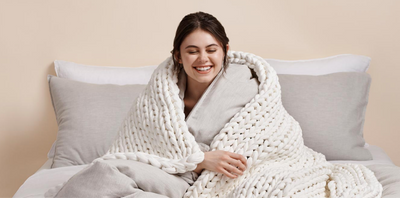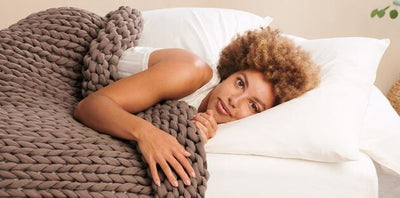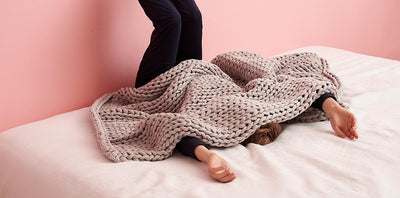8 Best Sleeping Positions For Comfortable And Sound Sleep
The best sleeping position is one that maintains the natural curve of your spine and allows easy breathing throughout the night. Lying on your back is often the best for this, but many prefer side or stomach sleeping. Using a body pillow for support can make any of these positions more comfortable.

Bearassentials
The side position is the most popular sleeping position and can be good for back health and breathing.
The back position is the best overall position for the back, but leads to more snoring.
The stomach position and reclined positions are not very popular and some say should be avoided.
Did you know?
Women are much more likely than men to sleep on their sides, and the gap increases with age. The reasons for this are unknown, but different BMI levels don't seem to play a role.
37% of people around the globe say back pain negatively impacts their sleep, and breathing disorders lead to similar interruptions. Thankfully, proper sleep posture can help lighten the load. With that in mind, here are the 8 best sleeping positions for comfortable and sound sleep.
1. Classic Side Position
A Norwegian study assessing sleeping positions found that side sleeping made up 54.1% of a large population’s total time in bed. That’s why it gets the top slot on this list.
It’s a middle-of-the-road option that can be great for back comfort and also reduces snoring by relieving pressure on airways. It also aids blood flow and digestion, one of the reasons why doctors say it’s the best pregnancy sleeping position. But even if you’re not preggers, you can get that boost to digestion and blood flow by sleeping on your left side.
It’s not all sunshine and roses, though. Side sleeping can lead to neck problems if you don’t set up properly. That’s why it’s important to sleep on a pillow that’s a little on the thicker side to keep your neck in proper alignment.
But the biggest drawback to sleeping on your side may be that it puts more pressure on fewer areas of the body, mainly the shoulders and hips. Because of gravity pulling your knees down, your hips can also turn out of position, leading to lower back pain for some. It’s the kind of twist you don’t want to do, but fortunately there are ways to avoid it.
2. Side Position With Full Body Pillow Support
Side sleeping can sometimes make pain in the joints and lower back worse, especially if you have chronic issues that give you shoulder pain or pain in the lower back. One way around this that may still allow you to stick to the fetal position you love so much is to modify it with our Cuddler body pillow.
To use a body pillow in the side position, straddle it between your knees and hug it up top. This helps to keep the hips and shoulders open and may ease some of the pressure in those areas.
A study published in 2021 found that it not only helped to more equally distribute pressure, but it also prolonged deep sleep in the side position. So if you’re someone who finds themselves going back to a side position but struggles with pain, the body pillow may be one solution.
As an added benefit, body pillows can also provide support for people in the latter stages of pregnancy when gravity starts to pull the belly down a little too much.

3. Side Position With A Pillow Between The Knees
If you can’t get your hands on a body pillow, one DIY solution that might give you the same benefits of having a pillow between the knees is to grab regular cushions from around the house.
Take any head or sofa pillow, stick it between the lower legs and knees, and make note of the results. If your back feels better come morning, that may be all you need. You can also hug a pillow up top to keep the pressure off your shoulders.
One thing to bear in mind with any side sleeping position is to keep a slight bend in the knees. This fetal style allows the spine to maintain its natural curve compared to a straight-legged posture that may leave the back stretching too far.
4. Classic Back Position
After side sleeping, back sleeping is the next most popular type of sleeping position at 37.5% of all participants in the Norwegian study
It’s the best sleeping position for neck pain as long as your head pillow is on the smaller side, allowing the head to remain neutral. Another benefit is that it’s great for displacing pressure across the body, helping you avoid numbness while sleeping.
On the other hand, back sleeping might as well be the boogeyman for those suffering from sleep apnea. The position makes it easier for soft tissue in the throat to close airways.
It’s also not always ideal for lower back issues, particularly for those with sciatica or herniated discs. Having either of these conditions can make lying with straight legs quite painful. And that’s where the next position comes in.
5. Back Position With Knees Up
If you want to take the back pain out of back sleeping, bring the knees up. And if you want to keep them there, you may want to slip a body pillow underneath.
Keeping your knees propped up while on your back can be the best sleeping position for lower back pain because it keeps the spine in a neutral position. It also shifts some of the weight away from your lower back.
The University of Michigan even recommends lying on the floor with your legs propped upon on a chair, but this can be a tough position to hold during sleep. Instead, you may want to try a body pillow like our Cuddler. It’s made from body molding Melofoam™ that allows you to adjust the height beneath your knees.
Body pillows aren’t only good for back pain, though. The pillow-beneath-the-knee method is also a popular choice for those recovering from knee replacement surgery.
6. Classic Stomach Position
The last type of sleeping position for normal bed setups is stomach sleeping, making up just under 10% of total sleeping time
Because it puts the sleeper close to a face-down position and therefore opens up airways, many people call it the best sleeping position for breathing problems like obstructive sleep apnea.
It’s also important to note that some people are just plain old comfortable on their stomachs. And if that’s the case for you, it’s the right position.
However, the consensus is that stomach sleeping is bad because it puts pressure on the lower back and neck. So if you notice that you’re having pain in these areas, you may want to switch things up. And if you’re looking for a pregnancy sleeping position, it’s safe to say that you should avoid this one altogether.
7. Stomach Position With Pillow Support
Whether you’re a long-time stomach sleeper or you’re giving it a shot for the first time, you may want to consider popping a flat pillow under the belly. The Mayo Clinic recommends it as the extra support can help keep pressure off your spine.
It’s even possible to use your head pillow if it’s flat enough as you likely won’t need it anyway. When sleeping on the side, it’s often best to avoid any head props as it forces the neck to bend awkwardly.
8. Classic Reclined
The last way to get set up in bed from this list wasn't covered in the Norwegian study, probably because it’s a special case. With that said, sleeping sitting up can be useful for some people. Just don’t make it an excuse to fall asleep in front of the TV!
One reason to consider it is that it may be the best sleeping position for stuffy noses. Because of the elevated angle, your sinuses are able to drain more easily as if you were standing.
Another reason to give the upright position a shot is if you’re recovering from shoulder surgery. The elevated position can prevent you from rolling painfully onto your sides and can also make it easier to use rehabilitation aids like abductor pillows and slings.
There are a few problems with the reclined position, though. For example, if the angle of the chair is too steep, your head can drop as you lose muscle control during the REM sleep cycle, jerking you awake.
Another reason you may want to avoid the reclined position is because it can lead to deep vein thrombosis, or blood clots. That’s why it’s not recommended as a long-term sleeping position.
It can also be a bit painful for the lower back, but as with other postures, a long body pillow under the knees can help with that.
Conclusion
When deciding on the best sleeping position for you, the question is whether or not you can relax. This means looking out for your spine and your airways while on your side, back, stomach, or in a reclined position. And the Cuddler can make each posture cozier by providing soothing support.







